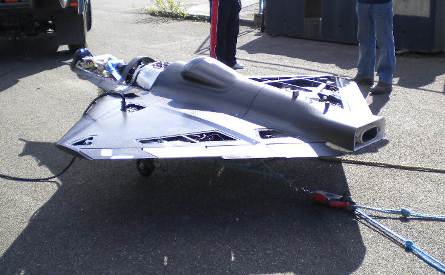Ground trials are underway for a vectored thrust prototype developed under a £6.5 million ($10.4 million) UK project to develop technologies for an unmanned air vehicle with no conventional control surfaces.
With a first flight planned by year's end, the 2.7m (8.8ft)-wingspan, 80kg (176lb) jet-powered UAV prototype called Demon is the culmination of the five-year Flapless Air Vehicle Integrated Industrial Research programme (FLAVIIR) funded by BAE Systems and the UK's Engineering and Physical Sciences Research Council.
|
|---|
Above: During ground trials in September and October 2009 BAE System's Demon UAV is readied for its maiden flight |
The UAV was designed at Cranfield University with the support of partner institutions. Its assembly was carried out by Cranfield's Composite Manufacturing Centre and BAE apprentices.
BAE's future capability programme director Richard Williams says: "Projects such as Demon have several advantages for BAE Systems. They help to ensure we get the greatest benefit from our invested research money and offer continued benefit from the increase in the capability and competencies of the universities involved."
Led by Cranfield and BAE, the project involved Imperial College of Science Technology and Medicine, Leicester, Liverpool, Manchester, Nottingham, Southampton, Warwick and York universities, and the University of Wales at Swansea.
Source: Flight International




















